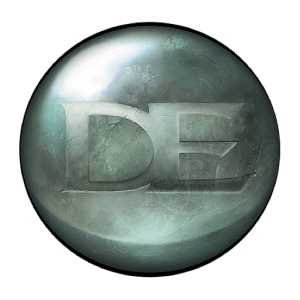id Software's Doom pioneered the modern first-person shooter genre. Released in 1993, it was a quantum leap in game engine technology with fluid and – at the time – incredibly realistic 3D graphics.
While you can still enjoy the original Doom and its progeny today in an emulator, modern games are held to higher standards of visual fidelity, usability, and multiplayer features. Doomsday Engine exists to refresh the technology of these classic games while retaining the core gameplay experience.
Features:
- UI Game profiles and add-on selection. Multiplayer server browser. In-game overlay with configuration options and console prompt.
- Graphics Particle effects and dynamic lights. Bloom and vignette effects. Geometry-based ambient occlusion. Supports 3D models for objects (FBX, MD5) and sky boxes. Upscaling texture filter. Stereoscopic rendering modes.
- Audio 3D sound effects and reverb (FMOD plugin). Supports music add-ons (MP3) and FluidSynth for high-quality MIDI music (Unix only).
- Multiplayer Automatic discovery of LAN servers. Master server for public games. Tool for running servers in the background.
- Technology Portable code built on Qt 5 and OpenGL.
What's New:
- Heretic: Sky textures are only partially visible.
- Hexen: Sky textures are sized incorrectly.
- Alignment of floor/ceiling textures whose size is not 64×64.
- macOS: Missing and flickering textures on M1 Macs.
- macOS: Bullets firing in the wrong direction on M1 Macs.
- macOS: 3D camera mode does not allow flying downwards, only upwards on M1 Macs.
New features
DOOM render hacks. TNT: Evilution and The Plutonia Experiment use several render/map hacks to take advantage of quirks in the original DOOM renderer. Many of these effects are now supported (or fixed) in Doomsday. Examples: TNT MAP02 deep water, TNT MAP02 windows overlooking the deep water, TNT MAP09 transparent window, TNT MAP31 Arachnotrons inside pillars.
Scripting. Several new Doomsday Script bindings were added, allowing access to game, player, and thing properties. In addition to spawning things, one can now list things by type, check their state and flags, and perform state changes on them. Things can also have an "On death" script that gets run when the thing dies. Bitwise operators are now available in scripts.
Modding. Sprite renaming is supported via DeHackEd. In Heretic, ambient sound sequences can be redefined and new ones can be added via the Audio module. Changing the sequences is also possible during gameplay. The earthquake effect from Hexen is now also available in Heretic. It can be controlled via scripts.
Renderer. Player HUD weapon models may specify a custom FOV value for rendering so that model authors have more control over the appearance, for instance to replicate a 2D sprite appearance more faithfully.
Fixes
- Color adjustments are applied via shaders, making it possible to only modify the appearance of the game view and not the entire monitor. This makes it feasible to use color adjustments when running in windowed mode.
- Fixed how looking up and down affects bullet trajectories. Previously bullets would get grouped too closely together when firing at steep angles.
- Fixed use of newline characters in Text definitions.
- Fixed alpha-blending of contours when using external images. There used to be a visible outline along the contours.
- Heretic's Phoenix Rod flame effect was too bright.
- Fixed warnings about "view-cross-width" having an invalid value. The default value was out of bounds. Note that your existing configuration may still have an invalid value, so a warning may get shown. If so, adjust the crosshair width setting in Options > HUD.
- TGA image loader now supports 8-bit and run-length encoded images.
- The FPS limiter setting is available even when no game is loaded. The "refresh-rate-maximum" cvar was removed; you will receive a warning about this after upgrading.

